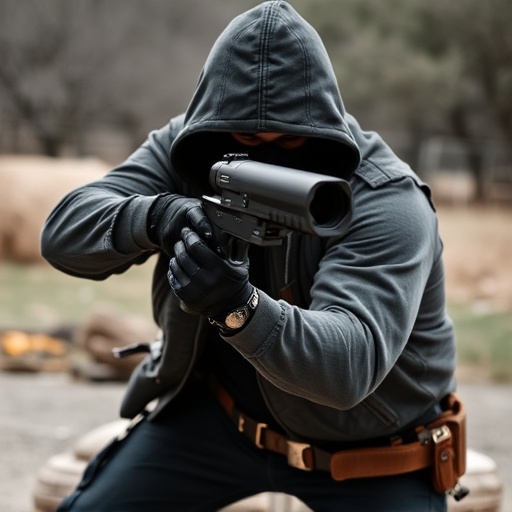Unveiling Best Concealed Carry Stun Guns: Electrical Spread Pattern Analysis
Electrical Current Spread Pattern Analysis (ECSPA) is crucial for designing high-performing yet safe…….
Electrical Current Spread Pattern Analysis (ECSPA) is crucial for designing high-performing yet safe best concealed carry stun guns. By simulating current density, heat generation, and energy fields within conductive materials under an electric field, engineers can optimize electrode placement, material selection, and energy dissipation. This process leads to compact, powerful devices that deliver precise shocks with minimal range and side effects, ensuring user safety and responsible usage in low-light conditions.
Electrical current spread patterns offer crucial insights into the performance and effectiveness of stun guns. By analyzing how current flows through different materials, we can optimize the design of concealed carry stun guns. This article delves into the science behind these patterns, exploring their role in enhancing stun device effectiveness. We’ll specifically focus on how this knowledge translates into selecting the best concealed carry stun gun models, ensuring maximum impact and user safety.
- Understanding Electrical Current Spread Pattern Analysis
- Applying This Knowledge to Best Concealed Carry Stun Gun Models
Understanding Electrical Current Spread Pattern Analysis

Electrical Current Spread Pattern Analysis (ECSPA) is a critical process in understanding how electrical current flows through various materials, particularly essential for designing and evaluating stun guns, including the best concealed carry models. By studying the spread pattern of current, engineers and researchers can optimize the efficiency and safety of these devices. This analysis involves mapping out the distribution of current density, heat generation, and potential energy fields within a conductive medium when subjected to an external electric field.
In the context of stun guns, ECSPA helps in determining the optimal placement of electrodes, understanding the impact of different materials on current flow, and ensuring even dissipation of energy to maximize the device’s effectiveness while minimizing unintended side effects. Advanced computational tools and simulations are employed to predict these patterns, allowing designers to make informed decisions to create more powerful yet user-friendly stun guns, catering to specific needs like concealed carry models that prioritize discreteness without compromising performance.
Applying This Knowledge to Best Concealed Carry Stun Gun Models

Understanding the spread pattern of electrical current can significantly influence the design and effectiveness of concealed carry stun guns. By leveraging knowledge about how jolts disperse, manufacturers can optimize models for maximum impact while minimizing discharge range and side effects. Best concealed carry stun gun models today incorporate these insights to deliver powerful, controlled shocks that ensure user safety and deter potential threats.
This strategic approach allows for the creation of compact devices with precise current distribution, making them ideal for personal protection without drawing excessive attention. Such innovations not only enhance the effectiveness of self-defense but also promote responsible usage, as users can confidently deploy these stun guns in tight quarters or less-than-ideal lighting conditions, all while minimizing risk to bystanders.
Electrical current spread pattern analysis plays a pivotal role in understanding the effectiveness of stun guns, particularly for best concealed carry models. By studying how electricity disseminates through the body, manufacturers can design devices that deliver optimal shock levels while minimizing energy waste. This strategic approach ensures the safety and efficiency of stun guns, making them reliable tools for personal protection. When selecting a concealed carry stun gun, understanding this analysis can help users choose models that offer both maximum impact and discreet operation.


